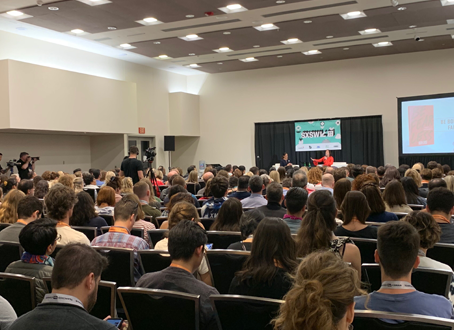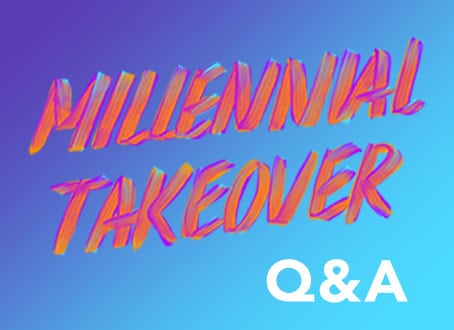During the coming decade, the Federal government will face one of its most difficult challenges—recruiting and retaining next generation talent. According to the U.S. Government Accountability Office, more than one-third of the Federal workforce will be eligible to retire this year. In terms of human capital, that equates to nearly 200,000 skilled workers that the Federal government will need to hire or replace across all of its departments in the near future.
As the Baby Boomers (born between 1946 and 1964) move on from their government posts, the natural successors you would expect to follow include members of the Gen X (born between 1965 to 1979) and Millennial (born between 1980 and 1999) generations. Millennials in particular are known for their high level of educational attainment, tech savvy, diversity and passion for doing good. Based on these characteristics, it would seem as if members of this generation in particular are the perfect stewards to protect the future of civil service.
The only problem is, Millennials don’t seem to be interested in working for the Federal government—at least according to the numbers. In 2014, the percentage of Federal government employees under the age of 30 dropped to just under seven percent, the lowest it has been in nearly a decade. (By comparison, 23.5 percent of the overall U.S. workforce is under 30 years old.) From 2010 to 2014, the under 30 demographic dropped by nine percent, meaning that more than 45,000 people in this age range left their jobs with the Federal government.
The good news is that the government, in particular the U.S. Office of Personnel Management, is actively working to better engage with its Millennial employees and address the generational gap in its workforce. And I am hopeful that these efforts will result in more next gen government employees. The concern I have is focused instead on how we got into this situation in the first place. As someone who champions the next generation’s role in civic engagement and social change I want to understand why the next generation is turning away and how their actions will thus ultimately change the social sector landscape.
At the Case Foundation, we’ve been studying more than 35,000 Millennial responses to surveys over the last five years to better understand how the next generation connects, gives and gets engaged with the causes they care about. It is within this research that I believe we can also begin to understand some of the contributing factors as to why members of the next generation are looking outside of the Federal government for employment in unprecedented numbers.
From what we’ve heard directly from Millennial respondents, we know that this generation is actively leading a shift in how change is made. While this transformation is taking many different shapes, one of the most relevant to this conversation is that in order to achieve change, most Millennials will choose to work through and with a cause, rather than for an organization. And if they cannot find an organization to work with, they will opt to create their own platform, organization or network from which to operate. These talented next geners want to lend their knowledge, expertise and time to help the people or issues the organization touches—just not necessarily through the traditional structures and stakeholders that are currently leading the social sector.
So where does this leave the Federal government—the largest and one of the oldest employers in the country? And what should you and your organization take away from this situation when it comes to recruiting and retaining your own next gen talent pool? Here are three ideas to consider:
- Focus on the Issue/Cause, not the Institution. Doing good matters to Millennials in both their personal and professional lives. According to the 2014 Millennial Impact Report, 41 percent of Millennials surveyed confirmed that “the type of job and what the company generally produces, sells or distributes” is a top consideration when deciding whether or not to apply for a job. And once they applied, more than 50 percent of Millennials surveyed reported that they were influenced to accept a job based on that company’s involvement with causes. As cause engagement in the workplace grows increasingly attractive, organizations have fundamentally changed how they recruit, retain and attract employees. To get and keep the best next gen talent, organizations are offering employees a wide variety of opportunities to engage in social good efforts… whether that be volunteer days, donation matches, pro-bono opportunities and more.
- It’s All About Trust. Currently, there is a historically low level of trust in all levels of government among the Millennial generation. Recent polls show that 47 percent of young Americans believe that “politics today are no longer able to meet the challenges our country is facing.” To state the obvious here… I do not think there is one person out there who wants to work for an entity that they don’t trust. As confidence in public figures has decreased, interestingly enough, Millennials’ adoption of alternative channels such as crowdfunding websites, crowdsourcing platforms, startups and social media profiles increased at an exponential rate. While the corollary here may be hypothetical at best, it seems as though investing time and funding to integrate the platforms, tools and networks used by the next generation into its own work will inevitably help the Federal government engage in more meaningful ways with the next generation. Going to where the next generation is and engaging them there in a meaningful way may help rebuild the trust that has been lost.
- Be Flexible Where and When it Counts. It’s becoming undeniably harder for Federal vacancies to compete with jobs from other sectors that are offering significant professional development opportunities, higher pay scales and more unique benefits that cater to the Millennial generation (e.g., flexible work schedules, chefs on campus, car service). While I am certainly not advocating for unnecessary perks in the government workplace, I do believe that flexibility— working from home, non-traditional hours, paternity leave and other similar benefits—in the workplace will be a game changer and something that will be a core benefit in the coming decade. Moreover, before one even gets to the benefits, they need to get the job… but most prospective employees won’t make it through the long application process, which takes on average 100 days. Core to attracting and keeping the next generation of employees, the Federal government must identify how it can offer more dynamic benefits and streamline its application process.
While the challenge of forging a stronger next gen talent pipeline may currently rest with the Federal government, businesses and organizations across the country will soon have to confront it as well. Millennials are now the largest generation represented in today’s workforce. And at 53.5 million strong, this generation, just like each generation before it, is actively reshaping the workplace—and that’s a good thing. The ongoing shifts represent an exciting challenge that I hope the will help positively shape the future of America’s workforce and more effectively engage the next generation in service.
What are you seeing that’s working or not working when it comes to recruiting and retaining next gen talent in the workforce? Share your thoughts by tweeting at @CaseFoundation #MCON, and be sure to join us at MCON this June to continue the discussion.





